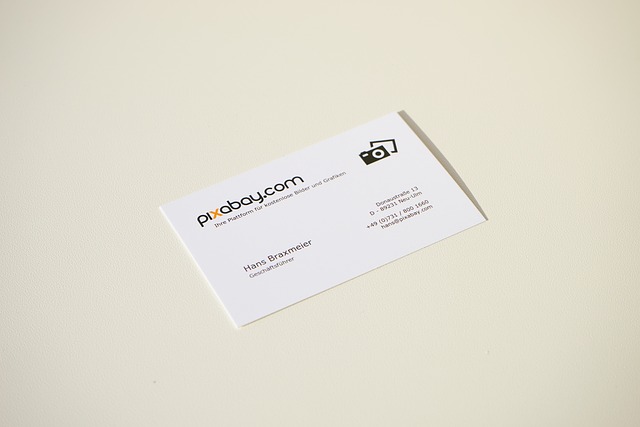Engage, Inform, Convert: Digital Marketing Strategies for Healthcare Specialties
Healthcare providers can effectively reach and engage potential patients through targeted online adv…….
Introduction
In the digital age, the healthcare sector has increasingly turned to online advertising as a cornerstone of their marketing strategies. This comprehensive article delves into the multifaceted world of online advertising specifically designed for healthcare providers. We will explore its significance, global impact, economic considerations, technological advancements, policy and regulatory frameworks, challenges, and future prospects. By the end of this article, readers will gain a nuanced understanding of how healthcare providers can leverage online advertising to reach patients, promote services, and navigate the complexities of the digital marketplace.
Understanding Online Advertising for Healthcare Providers
Online advertising in healthcare encompasses a range of activities that involve marketing health services or products through digital channels such as search engines, social media platforms, email, and websites. This includes display ads, sponsored content, and search engine marketing (SEM). The core components of online advertising for healthcare providers include:
The historical context of online advertising in healthcare begins with early efforts to establish an internet presence in the 1990s, evolving into sophisticated digital marketing strategies today. It signifies a shift from traditional offline marketing methods to online platforms that offer greater precision, measurement, and patient engagement.
Global Impact and Trends
The global impact of online advertising in healthcare is profound, with trends shaping its trajectory across different regions. In North America, the United States leads with significant investment in digital marketing by healthcare providers, driven by a high rate of internet usage and digital literacy. In Europe, countries like the UK, Germany, and France are investing heavily in online advertising due to regulatory changes that support direct-to-consumer (DTC) marketing. Asia-Pacific is rapidly emerging as a significant market, with China and India leading the way due to their large and growing populations with internet access.
Key trends include:
Economic Considerations
The economic aspects of online advertising in healthcare are multifaceted, with market dynamics influenced by patient demographics, technological advancements, and investment patterns. In economic systems worldwide, healthcare providers are recognizing the need for digital presence as a means to compete, innovate, and grow. The role of online advertising is not merely to increase market share but also to educate patients, improve health outcomes, and build trust in healthcare brands.
Investment patterns show that larger hospital systems and pharmaceutical companies often have the resources to invest heavily in digital marketing. However, smaller practices are also finding cost-effective solutions through targeted campaigns and performance-based advertising models. The economic impact is significant as these investments can lead to increased patient acquisition, higher engagement rates, and ultimately, improved financial performance for healthcare providers.
Technological Advancements
Technological advancements have revolutionized the way healthcare providers approach online advertising. From programmatic ad buying to real-time analytics, these technologies enable more efficient and effective campaigns. The impact of these advancements includes:
The future potential of technology in online advertising for healthcare is vast, with emerging innovations like augmented reality (AR) and virtual reality (VR) offering new ways to engage patients and demonstrate medical procedures or health products.
Policy and Regulation
The policy and regulatory landscape for online advertising in healthcare is complex and varies by region. In the United States, regulations by the Food and Drug Administration (FDA) govern DTC advertising, ensuring that information provided to patients is accurate and not misleading. The European Union’s General Data Protection Regulation (GDPR) imposes strict rules on data privacy and management for all online activities.
Key policies and legislative frameworks include:
Healthcare providers must navigate these regulations carefully to ensure compliance while effectively engaging with their audience online.
Case Study: Telehealth Platforms
Telehealth platforms have seen a surge in popularity, particularly during the COVID-19 pandemic. Online advertising for these platforms has become crucial in educating patients about the availability and benefits of virtual consultations. A notable telehealth platform reported a 50% increase in new users after launching an targeted online ad campaign. The campaign combined personalized messaging with user testimonials, highlighting the ease and effectiveness of telehealth services. This case study demonstrates the power of online advertising in reaching potential patients and meeting them where they are—online.
Conclusion
Online advertising in healthcare is a dynamic field that continues to evolve with technological advancements and regulatory changes. It offers healthcare providers an opportunity to engage with patients effectively, promote health services, and contribute to better health outcomes. By understanding the core components, global trends, economic considerations, technological advancements, and policy landscape, healthcare providers can navigate this digital frontier successfully. The future of online advertising in healthcare is not only promising but essential for staying competitive and relevant in a rapidly changing digital world.

Healthcare providers can effectively reach and engage potential patients through targeted online adv…….

Healthcare providers are embracing digital transformation by utilizing online advertising and social…….

In a competitive online healthcare advertising landscape, leveraging patient testimonials and succes…….

Healthcare providers are leveraging powerful digital tools like Google Ads and social media marketin…….

Understanding target audiences is key to successful online ad campaigns in healthcare. By segmenting…….

The healthcare industry has transitioned to digital marketing, leveraging tools like Google Ads for…….

Understanding your target audience is key in healthcare marketing. By targeting ads based on demogra…….

Patient testimonials and success stories are powerful tools in the competitive healthcare sector. By…….

Healthcare providers leverage online advertising and social media marketing to target specific patie…….